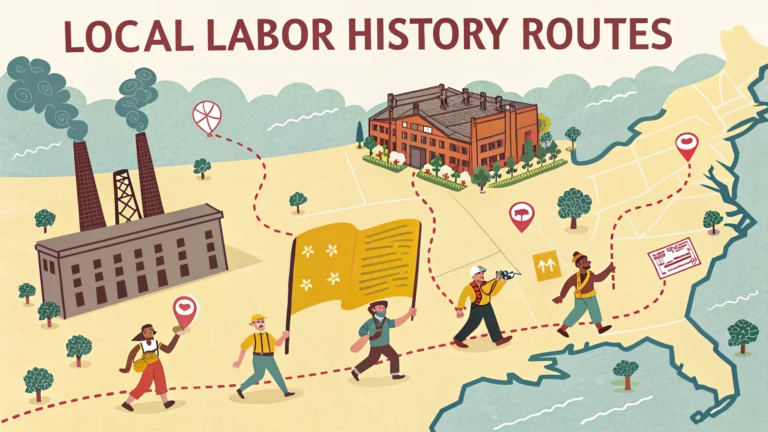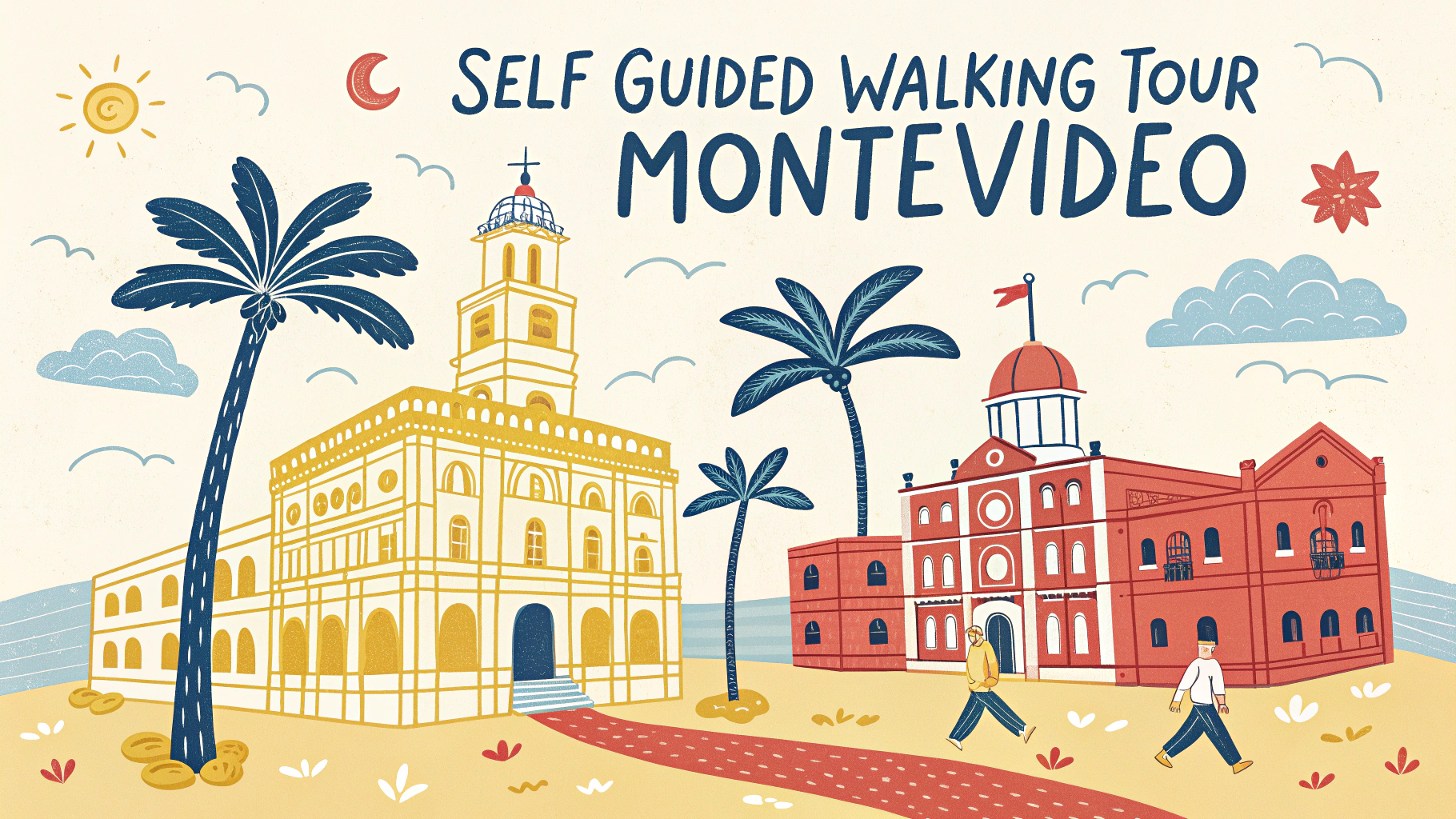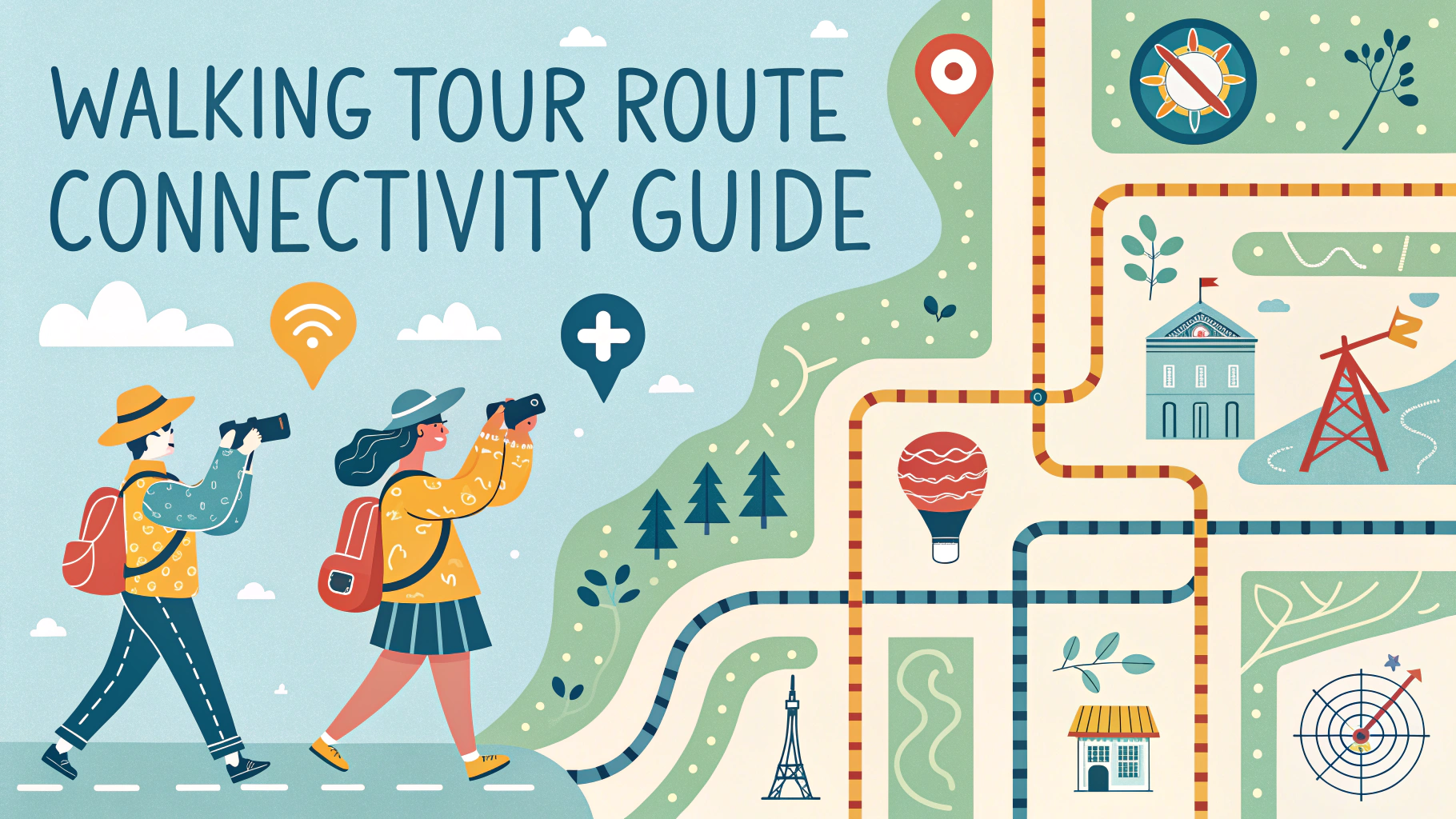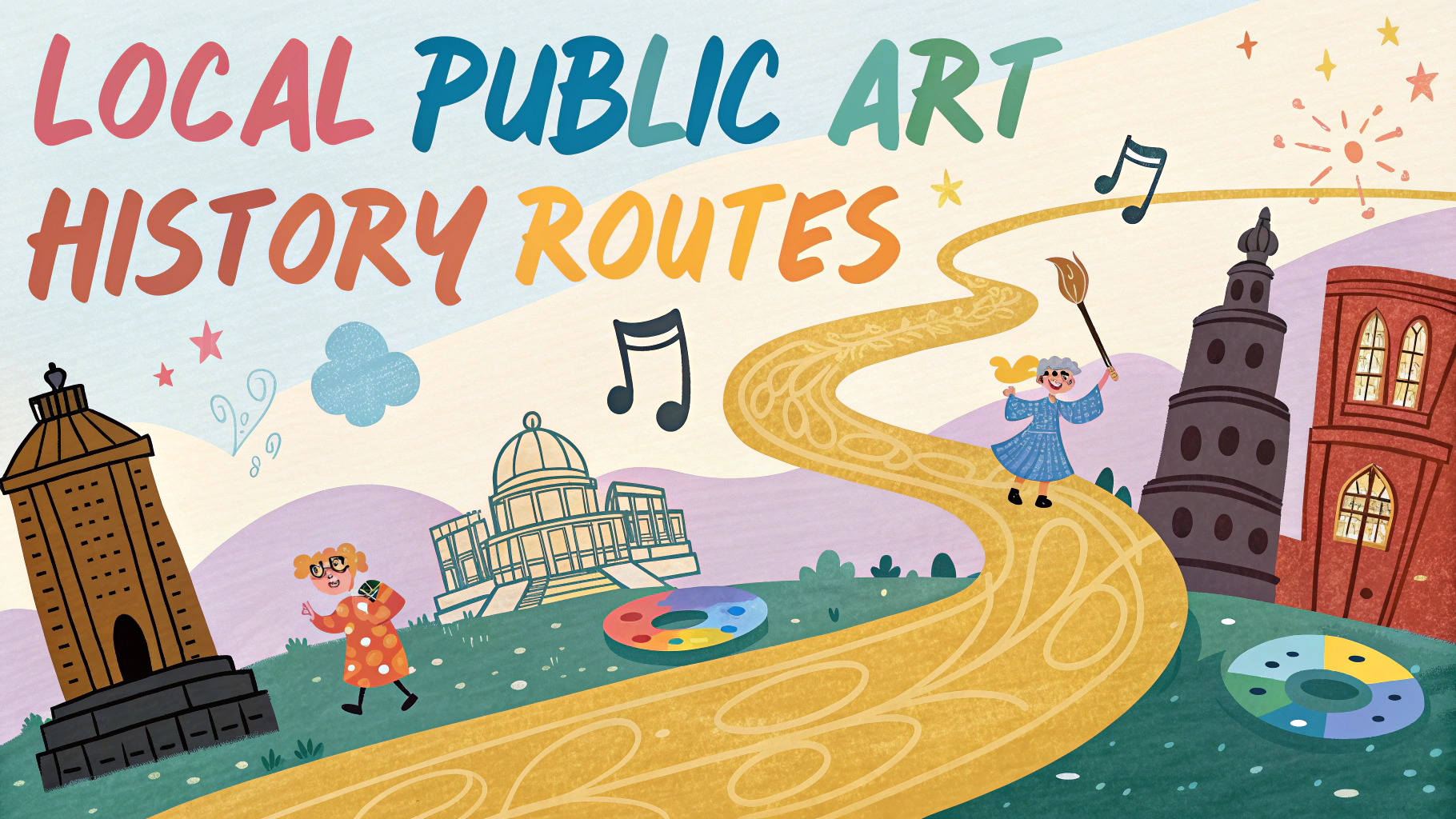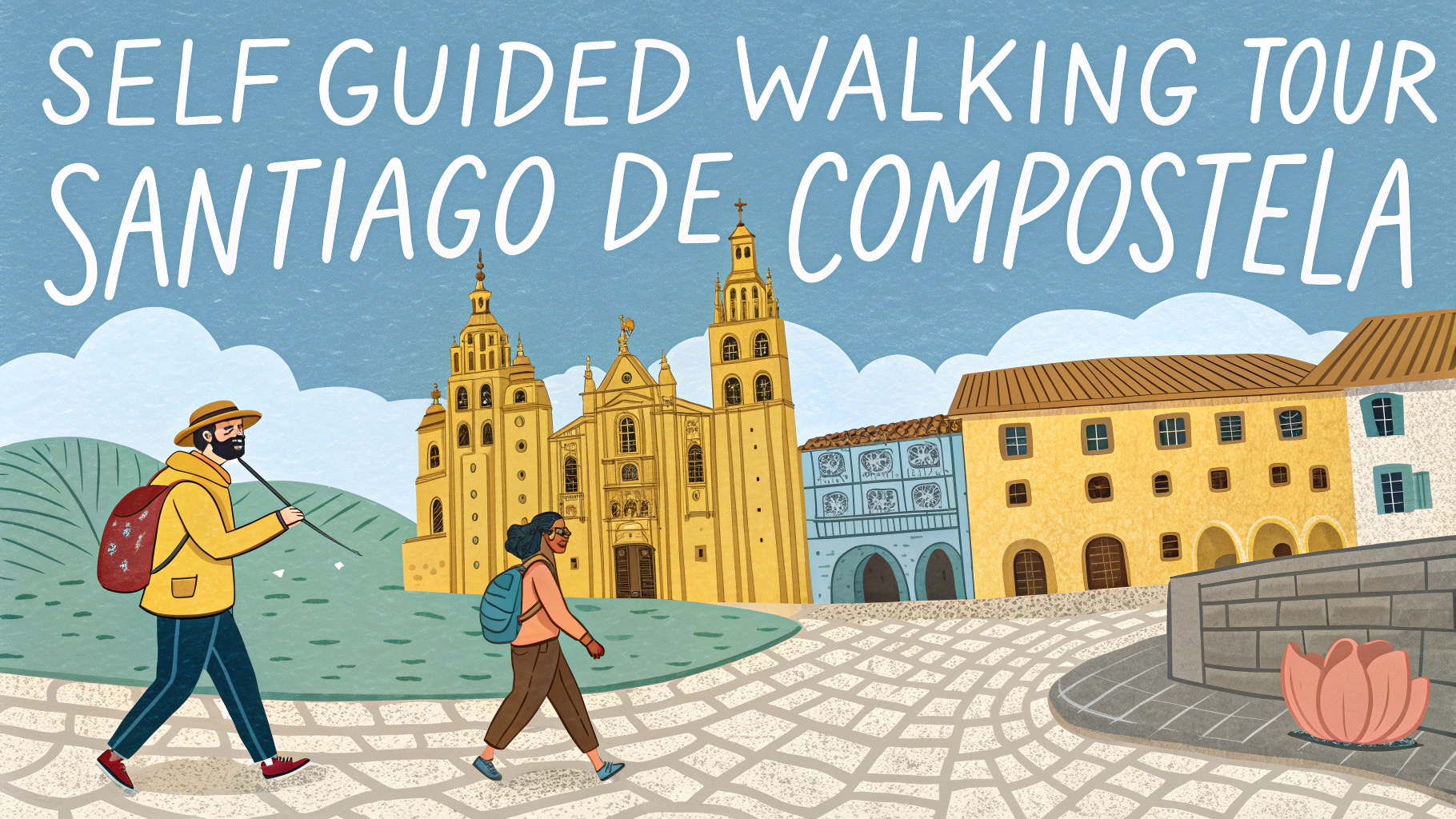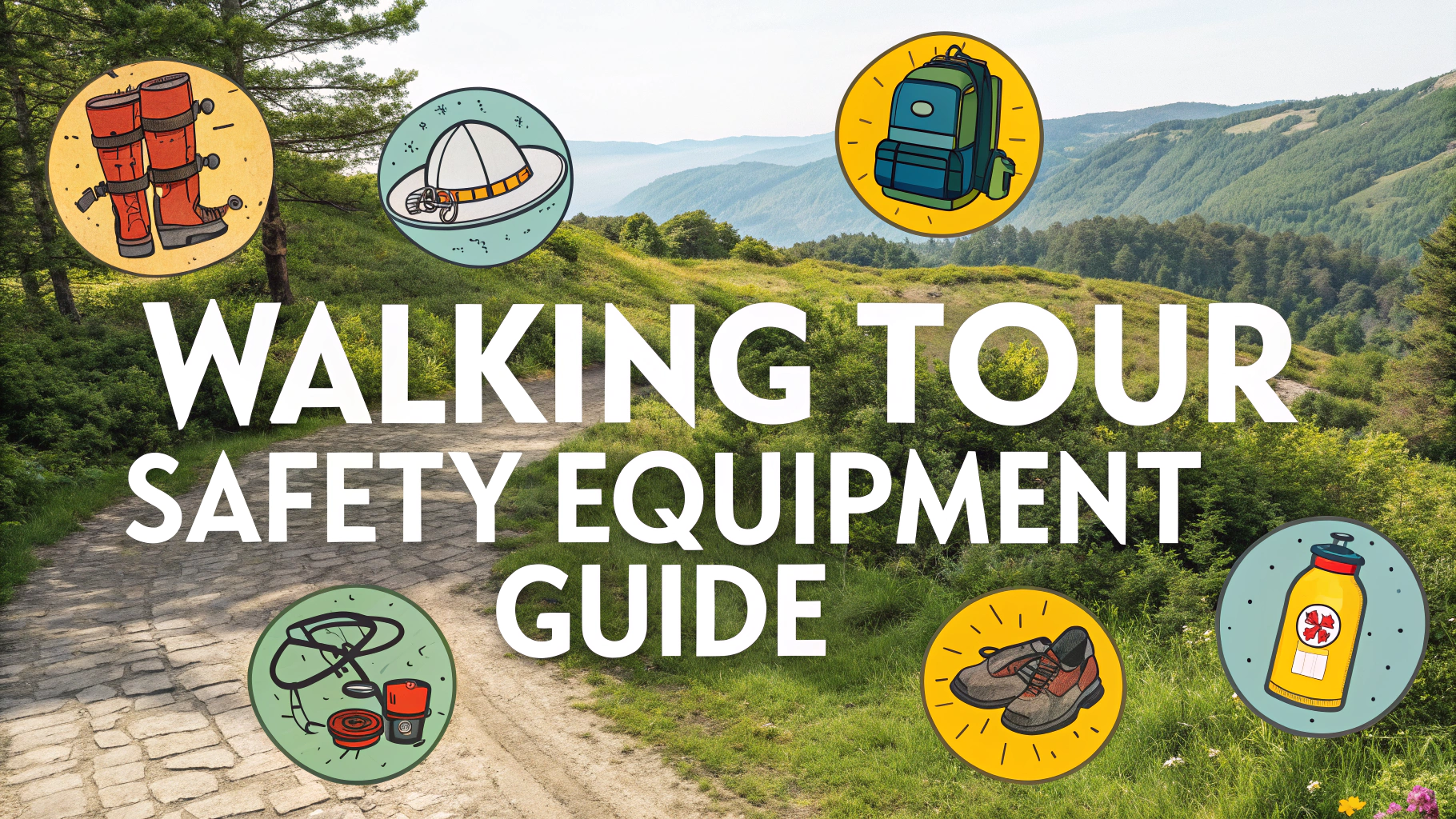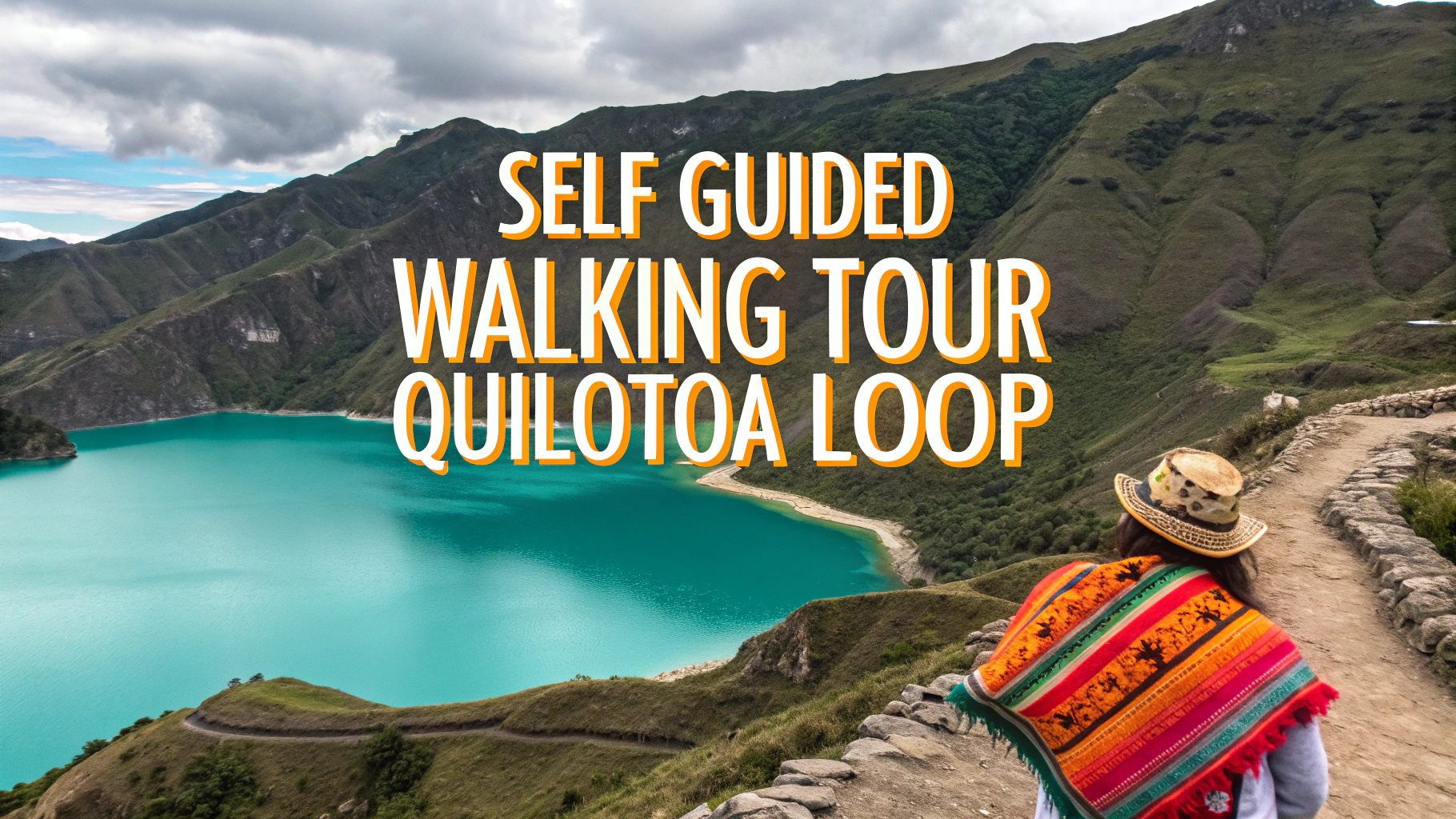Self-guided labor history walking tours offer a unique way to explore local workers’ rights movements, union organizing, and historic strikes while moving at your own pace.
Planning Your Labor History Route
Research local libraries, historical societies, and union halls to identify key labor movement sites in your area.
- Former union meeting locations
- Strike sites and picket lines
- Historic factories and mills
- Labor leader homes and offices
- Worker housing districts
Essential Resources
Download these tools before starting your walk:
- Local labor history map (check historical society websites)
- Audio guide recordings if available
- Period photos of locations
- Brief history of major labor events
Recommended Route Features
| Feature | Purpose |
|---|---|
| Information panels | Historic context and details |
| Rest stops | Places to reflect and review notes |
| Photo opportunities | Compare historic vs current views |
Safety Tips
Plan your route during daylight hours for better visibility of historic markers and safer navigation.
- Wear comfortable walking shoes
- Bring water and snacks
- Share your route plan with someone
- Keep emergency numbers handy
Documentation Resources
Contact these organizations for detailed route information:
- AFL-CIO Local History Project: (202) 637-5000
- National Park Service Labor History Sites: (202) 208-6843
- State Historical Society Archives (check your state)
Photography Guidelines
- Respect private property boundaries
- Ask permission before photographing current businesses
- Document changes in building uses over time
Best Seasonal Times
Spring and fall offer optimal walking conditions with moderate temperatures and good visibility for historic markers.
Additional Tips
- Download offline maps for areas with poor cell service
- Bring a notebook for observations
- Research current operating hours for any museums or historic sites
- Consider joining group tours first to learn route highlights
Making Historical Connections
Connect historic labor events to present-day working conditions by observing how industrial areas have transformed over time.
- Note architectural changes in former factory buildings
- Research current labor organizations in historic union districts
- Compare historic worker housing to modern residential areas
Interactive Learning Elements
Digital Resources
- QR codes linking to historical footage
- Augmented reality apps showing period scenes
- Online databases of worker testimonials
Physical Materials
- Printed route maps with timeline overlays
- Historic newspaper clippings
- Period photographs for site comparison
Group Experience Options
| Activity Type | Learning Benefit |
|---|---|
| Discussion stops | Share insights and perspectives |
| Photo sessions | Document site changes |
| Reading circles | Review historical accounts |
Conclusion
Self-guided labor history walks provide an engaging way to connect with local working-class heritage while developing a deeper understanding of labor movements’ impact on modern society. Through careful planning and documentation, these educational journeys help preserve important historical narratives for future generations.
- Share your route discoveries with local historical societies
- Consider creating digital guides for others
- Connect with labor history enthusiasts online
- Contribute photos to archival collections
FAQs
- What are labor history walking routes and why are they important?
Labor history routes are self-guided walking tours that highlight significant locations related to workers’ rights movements, strikes, union organizing, and labor activism in local communities. They preserve and educate about the struggles and achievements of working people throughout history. - How long does a typical labor history walking tour take to complete?
Most self-guided labor history walking tours take between 1-3 hours to complete, depending on the route length, number of stops, and time spent at each location. Routes typically range from 1-4 miles. - What types of historical sites are typically included on labor history routes?
Common sites include former union halls, strike locations, protest gathering spots, historic factories and mills, workers’ housing, memorial sites, labor temples, and buildings associated with significant labor leaders or events. - How can I find labor history walking tours in my area?
Local historical societies, labor unions, museums, libraries, and tourist information centers often maintain maps and guides for labor history routes. Many cities also have digital versions available through tourism websites or mobile apps. - What should I bring on a self-guided labor history walking tour?
Essential items include comfortable walking shoes, a printed or digital map of the route, water, weather-appropriate clothing, a camera to document historical sites, and any tour materials or guides providing historical context. - Are labor history walking tours accessible to everyone?
Most urban labor history routes follow public sidewalks and streets, making them wheelchair accessible. However, some historic areas may have uneven surfaces or stairs. Tour descriptions typically include accessibility information. - What is the best time of year to do labor history walking tours?
These tours can be done year-round, but spring and fall often provide the most comfortable weather conditions. Many cities offer special guided versions during Labor Day weekend and other significant labor history anniversaries. - How are labor history walking routes developed and maintained?
Routes are typically developed through collaboration between labor historians, unions, historical preservation groups, and local governments. Maintenance involves updating documentation, preserving historical markers, and ensuring route accessibility. - Can I create my own labor history walking tour?
Yes, by researching local labor history through archives, historical societies, and union records, you can develop your own route. Many communities welcome citizen initiatives to document and preserve labor history. - How do labor history walking tours connect to current labor movements?
These tours help connect past struggles with contemporary labor issues by showing the historical context of workers’ rights, union organizing, and workplace conditions. Many routes end at currently active union halls or labor organizations.
